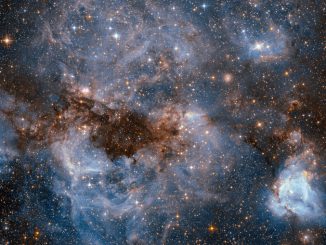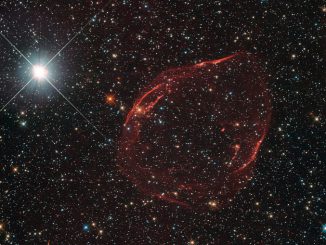
Hubble spotlights irregular galaxy IC 3583
This NASA/ESA Hubble Space Telescope image reveals a delicate blue group of stars — actually an irregular galaxy named IC 3583 — that sits some 30 million light-years away in the constellation of Virgo. This small galaxy is thought to be gravitationally interacting with one of its neighbours, the spiral Messier 90.









